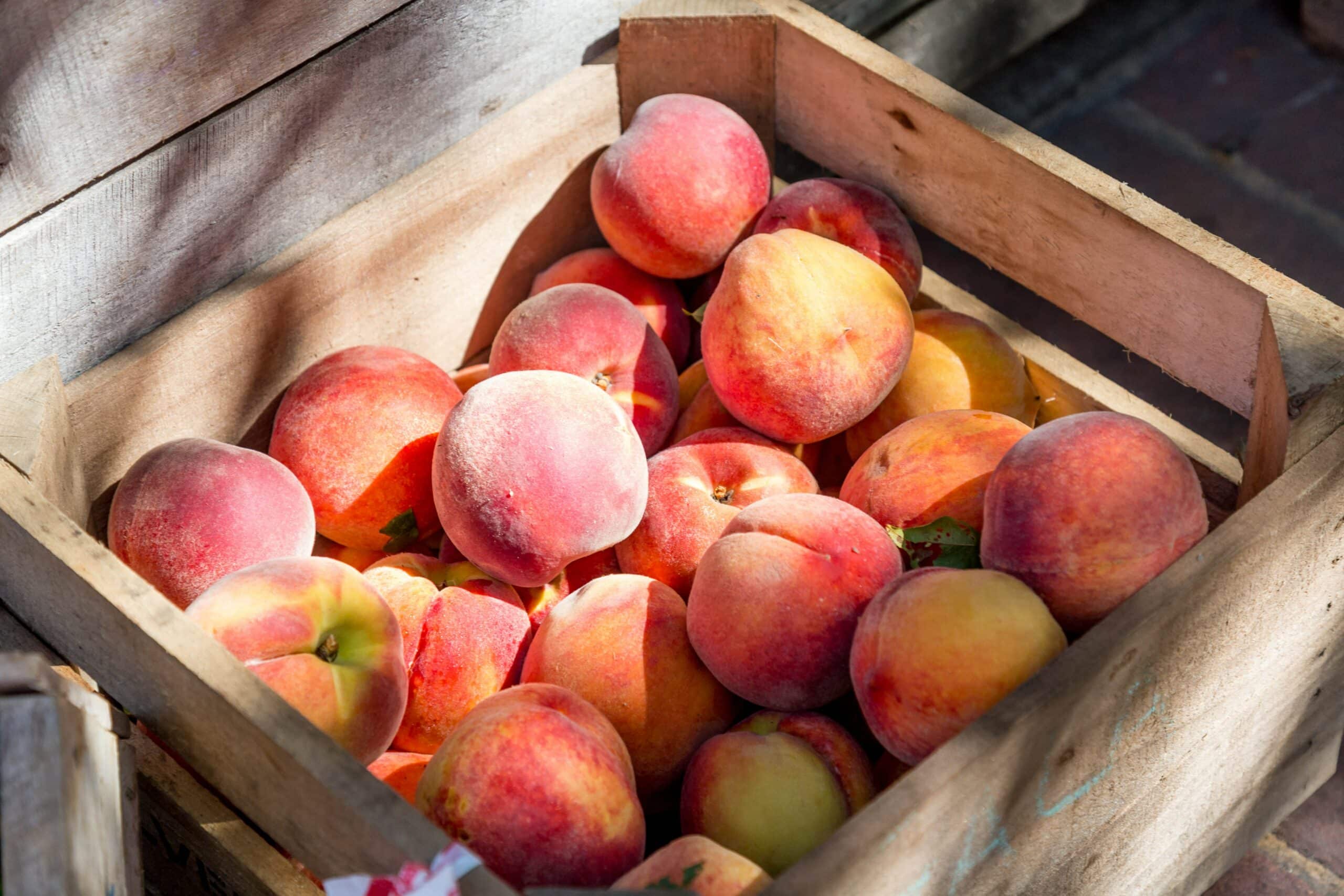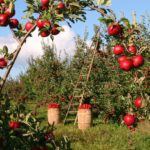We all want to enjoy the sweet taste of success. But how do we get there? To be successful in life, it’s important to take care of our own needs and those of others around us. If you’re looking for a way to bring some sweetness into your life, why not try growing your own peach trees?
Growing peach trees is a great way to serve yourself and others while experiencing the satisfaction that comes with a job well done. With the right care and attention, you can nurture your own peach trees so that they bear delicious fruit each year. In this article, we will provide an overview on how to grow and care for peach trees so that you can get the most out of them.
Whether you’re a gardening novice or experienced gardener, learning how to grow and care for peach trees is a rewarding experience. It’s an opportunity to put your knowledge into action and reap the rewards from it. With this guide, you’ll discover all you need to know about growing and caring for peach trees – from planting to harvesting – so that you can reach the sweetest success!
Choosing A Peach Variety
It’s often said that the most important part of growing a successful peach tree is selecting the right variety. But is this really true? To find out, we must look at the other elements of peach tree care and how each one affects the success of your tree.
The first step to successfully growing and caring for a peach tree is finding the ideal site for planting. Sunlight, soil drainage and soil fertility are essential factors in determining where to plant your tree. When these environmental requirements are met, you can be sure that your tree will have an optimal chance of thriving.
In addition to its environment, a peach tree needs regular pruning and fertilization to stay healthy. Pruning helps control the size of the tree and encourages new growth, while fertilization provides necessary nutrients to keep it going strong. Finally, appropriate watering and pest management can help ensure that your peach tree stays healthy throughout its life cycle.
With all these components in place, you’re well on your way to enjoying a bountiful harvest of fresh peaches!
Site Selection
“The right location is essential for successful peach tree growth.” As the adage goes, a tree can only be as strong as its roots. Securing a suitable site is thus key to ensure your peach trees thrive and produce juicy fruits. Here are 3 tips to consider when selecting the perfect spot:
First, choose an area with plenty of sunlight. Peach trees need at least 6-8 hours of direct sunlight each day for optimal growth and fruit production. Secondly, ensure good air circulation around the trees by positioning them in a place that’s not too cramped or enclosed by other plants. Finally, look for an area that has well-draining soil and is protected from strong winds.
When it comes to planting peach trees, proper soil preparation is also important. Digging into the ground and creating raised beds can help improve drainage and water retention, which will help your trees flourish even more. It’s also a great idea to add organic matter such as compost or mulch once you’ve finished planting your trees to further enhance the soil quality. With these steps in mind, you’ll be on track to growing healthy, fruitful peach trees! Now let’s look at how we can get our soil ready for planting peaches.
Soil Preparation
It is a widely accepted theory that soil preparation is an integral part of growing peach trees. However, one might ask themselves: what does soil preparation actually involve? As we investigate this theory further, it becomes clear that there are several key components to this important step in the growth of peach trees.
Firstly, it is essential to make sure that the soil you will use for planting peach trees has a pH of between 6.0 and 6.5. If your soil’s pH is lower than 6.0, lime should be added to the soil in order to increase its alkalinity; if your soil’s pH is higher than 6.5, sulfur should be added to reduce its alkalinity. Additionally, organic matter such as compost or manure should be mixed into the soil; this will help provide vital nutrients and improve drainage so that the roots of your peach tree can absorb water more easily.
Another important factor to consider when preparing the soil for planting peach trees is whether or not it contains any weeds or pests. If it does, it will be important to take measures such as tilling or applying herbicides in order to get rid of them before planting your tree; this will prevent them from crowding out or competing with your tree for resources once it’s planted.
Soil preparation plays an essential role in helping ensure that your peach tree has all the conditions necessary for healthy growth and development. With careful attention paid to selecting the right type of soil and making sure it doesn’t contain any pests or weeds, you can set yourself up for success when you plant your new peach tree!
Planting Peach Trees
Did you know that peach trees are among the oldest cultivated fruits in the world, with records of their cultivation going back over 4,000 years? Planting peach trees is not difficult and can be very rewarding if done correctly.
When planting peach trees, it’s important to keep a few things in mind. First, select an area that gets full sun – at least six hours a day – and has good drainage. The soil should also be slightly acidic with a pH between 6 and 7. Dig a hole twice as wide as the root ball and just as deep. If necessary, mix some organic fertilizer into the soil to ensure your tree has plenty of nutrients for growth.
You’ll also want to make sure your tree is planted at the same depth as it was in its pot – or slightly higher to account for settling after planting. Once you’ve finished planting your tree, water thoroughly until you see water draining out of the bottom of the pot. Lastly, add two to three inches of mulch around your tree but keep it away from the trunk itself to prevent fungal diseases caused by too much moisture near the root system.
Now that you have successfully planted your peach tree, it’s time to move on to watering and caring for it properly so you can enjoy juicy peaches in a few years!
Watering Peach Trees
How do you ensure your newly planted peach trees get the attention they need? Watering is essential for healthy growth, but it’s also important to know how much and when. If you’ve been wondering about the best ways to care for your new peach trees, read on!
Watering your peach tree is a delicate balancing act. Too little water can cause drought stress, while too much can lead to root rot. The key is to find a balance that keeps the soil moist without over-saturating it. Start by giving your tree one inch of water every week; this should be enough to satisfy its needs. Make sure you water during the morning or evening, when the sun isn’t at its strongest and temperatures are cooler – this will help reduce evaporation.
You don’t have to worry too much if there’s an occasional downpour – these will naturally provide additional moisture for your tree. But if you’re dealing with an extended dry spell, then it’s important to top up your tree’s water supply as needed. Once established, mature trees should be watered less frequently since their roots are better equipped to reach deeper into the soil for moisture.
Caring for a peach tree isn’t difficult, but it does require some commitment and knowledge of what works best in different climates and soils. With proper watering and other essential care tips, you’ll be well on your way to growing beautiful and delicious peaches!
Fertilizing Peach Trees
Fertilizing peach trees is an important step in ensuring healthy growth and maximum yield. Fertilizers provide essential nutrients that help the tree reach its fullest potential. However, it’s important to apply the right kind of fertilizer for your particular tree and to follow specific application instructions to avoid over-fertilizing. It’s best to use a fertilizer that contains nitrogen, potassium, and phosphorus in balanced proportions. Additionally, it’s important to feed peach trees at the right time of year – typically in early spring when leaves are beginning to appear on the tree. Applying too late or too early can cause damage and hinder growth. Finally, always follow the instructions on the package of fertilizer carefully in order to properly feed your peach tree. Doing this will help ensure that your tree gets all the nutrients it needs for healthy growth and optimal fruit production. With proper fertilization, you can look forward to bountiful harvests of juicy peaches from your own backyard!
Pruning Peach Trees
Tending to a peach tree is like caring for an old friend; it takes patience and dedication, but with the right approach, the rewards are plentiful. Pruning peach trees is an essential part of keeping them healthy and productive. Here are a few tips to bear in mind when pruning:
Choose the right time of year. Prune during late winter or early spring when your peach tree is dormant and before new growth begins.
Cut away dead or diseased branches first. If you notice any branches that look wilted, discolored, or otherwise unhealthy, cut them back as far as possible without damaging the rest of the tree.
Remove any crossing branches that could rub against each other and cause damage over time. If two branches are close enough together that they cross over one another, get rid of one of them so there’s less risk of damage from rubbing together.
Thin out crowded areas to promote better air circulation and reduce disease risks. Overcrowding can cause moisture buildup which can lead to fungal diseases like powdery mildew or brown rot.
Pruning your peach trees regularly can help keep them healthy and productive for years to come, but it’s important to take your time when working on them – especially if you’re new to pruning fruit trees! Taking care not to snip too much off in one go ensures that your trees stay balanced and remain a mainstay in your garden for many seasons ahead. With proper pruning comes the next step – weed control – necessary for preventing pesky weeds from taking over your precious peach trees!
Weed Control
Weeds can be like a force of nature, threatening to overtake any garden if left unchecked. With peach trees, weed control is an essential part of successful growth and fruiting. Taking the time to keep weeds away from your peach tree will pay off in the long run!
The best way to control weeds around your peach tree is to use mulch. Mulches such as straw and wood chips help suppress weed growth and conserve soil moisture. They also add organic matter to the soil as they decompose, providing extra nutrition for the tree’s roots. Additionally, the mulch layer helps keep the trunk of the tree free from weeds and grasses, which can cause damage or disease if allowed to grow too close.
Hand-weeding is another important tool for keeping weeds at bay. This should be done on a regular basis during growing season – weekly or biweekly – so that you can keep on top of any new weed growth. Be sure to pull up as much of the root system as possible when weeding so that you prevent them from regrowing later on. It’s also important to remove any fallen fruit or leaves from around the tree, as these are prime locations for weedy plants to germinate and grow!
Disease And Pest Control
To ensure our peach trees remain healthy and happy, we need to address any potential disease and pest issues. Disease prevention starts with proper planting and care of the tree, as unhealthy trees are more prone to illness. Make sure to plant your tree in a sunny location with well-draining soil and water regularly, especially during dry periods.
Once your tree is established, inspect it often for signs of pests or disease. Keep an eye out for any discolored leaves or damaged fruit. If you see any signs of insect activity, treat the tree with an insecticidal spray according to the manufacturer’s directions. Additionally, you can prevent disease by removing dead branches or leaves that may be harboring fungi or bacteria.
With diligent care and attention, you should be able to keep your peach tree healthy and free from most diseases or pests. As long as you stay on top of regular inspections and maintenance, your tree should continue to produce sweet peaches year after year! Now that we’ve discussed how best to care for our peach trees, let’s move onto harvesting these delicious fruits…
Harvesting Peaches
Ah, the sweet smell of ripe peaches! Harvesting them is the best part (for us) of growing your own peach trees. All those months of hard work and care finally come to fruition. But what’s next? Let’s take a look at how to harvest and store your peaches properly.
First off: irony alert! Contrary to what some may think, harvesting peaches is actually quite easy – though you must be sure to do it correctly in order for them to last longer and maintain their flavor. Here are some tips on how to do it right:
•tThe key thing is timing: otHarvest when the peaches are mature but still firm. otTaste test one if you’re unsure; if it’s sweet, it’s ready! otFully ripe fruit will come off the branch with a gentle twist. •tHow much should you pick? otStart with small harvests until you know how long they last in storage. otDon’t pick more than you can use or preserve right away. otLeave some fruit on the tree for the birds and animals to enjoy! •tHandle with care: otHandle fruits gently so they don’t bruise or damage each other. otHarvest into shallow containers or baskets that allow air circulation around each piece of fruit. otRefrigerate as soon as possible after picking – especially on hot days – for maximum freshness and shelf life.
So now that we’ve gone over all this, let’s get down to business and start harvesting those delicious juicy peaches! From here, we’ll move onto storing our freshly picked bounty so they remain as flavorful and delicious as can be…
Storing Peaches
Storing peaches is like preserving a precious summer moment, to be enjoyed in the depths of winter. It can take a little bit of effort, but the reward is worth it. Here are some key tips for making sure your peaches last as long as possible: • Store them in the refrigerator if you plan on eating them within a few days • Freeze them if you want to enjoy them later on in the year • Keep an eye out for signs of spoilage, such as soft spots or discoloration
When it comes to freezing peaches, it’s important to use a freezer-safe container and ensure that the peaches are completely dry before freezing. When done correctly, frozen peaches can last up to twelve months. Additionally, freezing frees up valuable space in your refrigerator for other fresh produce.
For those looking for an even longer storage life, drying and canning are both viable options. Dried peaches will keep for up to two years when stored properly and canned peaches can last upwards of five years depending on their method of preservation. The process may seem intimidating at first but with a little practice and patience you’ll be able to make delicious treats that will last through any season. With these tips in mind, you’ll have no problem enjoying those sweet summer flavors all year round! Seamlessly transitioning into saving seed from peaches, this next step provides yet another way to enjoy your harvest long into the future.
Saving Seed From Peaches
Saving seed from peaches? Why would you want to do that? After all, it’s not like the peach trees are going anywhere. But, here’s the thing – when we save and propagate our own trees, we are taking an active part in preserving something that has been around since ancient times and has been a source of nourishment for generations.
It may seem like a lot of work – after all, who has time to grow their own tree from scratch? But saving seeds can be surprisingly easy and incredibly rewarding. Not only is it a great way to save money on buying saplings, but it also helps maintain genetic diversity in the species. Plus, if you’re really lucky, you might even get your hands on some unique varieties!
Propagating peach trees from saved seeds is quite simple: once you have harvested ripe peaches from your tree, simply remove the pit and let it dry out for several days before planting it in soil or rooting medium. The key is to keep the soil moist but not soggy until the seedling emerges. From there, you can enjoy watching your own little tree grow right before your eyes!
So don’t let those precious peach pits go to waste – with just a little bit of effort and care, they could become one-of-a-kind masterpieces of nature that will bring joy for years to come. Onward we go to propagating these special trees!
Propagating Peach Trees
Propagating peach trees can be a rewarding experience. It allows you to grow these beautiful trees and have them blossom in your garden or yard. Propagation is the process of taking a cutting from one tree and planting it in order to create a new one. There are several ways to propagate peach trees, including air layering, grafting, and cutting.
Air layering is when you take a branch from an existing tree, wrap it with moist sphagnum moss and plastic, and wait for roots to form before cutting it off from the parent tree. Grafting involves attaching a bud from the desired variety onto the rootstock of another variety with a strong union that will hold up over time. Finally, stem cuttings are when you take stem cuttings from an existing tree and root them in soil or water until they develop roots.
No matter which method you use, patience is key when propagating peach trees. It typically takes around two months for new roots to begin forming on the cutting. Once they have formed, you should plant your young tree in well-drained soil so it can grow healthy and strong.
TIP: When propagating your peach tree through air layering or grafting, make sure that you use sharp tools such as pruners or shears to ensure clean cuts each time so that proper healing can occur.
Winter Care For Peach Trees
Ah, winter care for peach trees. So exciting, isn’t it? It’s like giving a bear a pedicure: it can be done, but why bother? However, as a conscientious tree caregiver, you have no choice but to take on this daunting task. Here are three easy steps to make winter care for peach trees simple and painless:
- Plant late-blooming varieties of peaches in order to prevent frost damage.
- Prune the tree with sharp shears in early spring, before the buds swell.
- Cover your tree with a cloth or blanket at night when temperatures dip below freezing.
These three steps will help ensure that your beloved peach tree survives the cold winter months and produces delicious fruit come summertime. And remember: if you find yourself in over your head with an unruly peach tree, don’t worry – there’s plenty of troubleshooting advice out there!
Peach Tree Troubleshooting
No matter how hard you work, sometimes problems can occur with peach trees. If this happens, it’s important to be able to identify and troubleshoot the issue. In this section, we’ll explore the common issues you might encounter when growing and caring for peach trees, plus strategies for solving them.
The first problem to look out for is a lack of fruit production. This might be due to improper pollination or inadequate sunlight and fertilizer. To resolve this issue, make sure your tree gets 8-10 hours of direct sunlight each day and fertilize it regularly according to the manufacturer’s instructions. Additionally, ensure that your tree is in an area where there is plenty of wind or other pollinating insects available to help with pollination.
Another thing to keep an eye out for is pests or diseases that could be attacking your tree. If you notice any signs of infestation, such as wilting leaves or discolored spots on the fruits, take action immediately by spraying your tree with an appropriate insecticide or fungicide solution. Additionally, make sure you prune away any dead branches or diseased areas from the tree to help prevent further spread of the problem.
Keeping these tips in mind can help ensure that your peach tree remains healthy and productive for years to come! With proper care and troubleshooting strategies, you can enjoy a bountiful harvest all season long!
Frequently Asked Questions
What Is The Best Time To Plant Peach Trees?
A stitch in time saves nine, and this is especially true when planting peach trees. Knowing the right time to plant a peach tree is key to its long-term success and health. Planting at the right time can determine how well the tree fares in weather events, pests, and other potential issues. So when is the best time to plant?
The best time to plant a peach tree is usually in early spring, once frost danger has passed. Peach trees need full sun for at least six hours a day and prefer loose, well-draining soil with plenty of organic matter. The ideal temperatures for planting are between 45 and 80 degrees Fahrenheit. This ensures that the tree will have enough heat energy for growing roots without being too hot or cold for its delicate flowers later on.
Once you’ve planted your peach tree in the perfect spot, there are still some important steps to take to ensure it stays healthy year round. Pruning should be done each winter to keep the tree’s shape under control, thinning out fruit clusters when needed as well as removing any dead or diseased branches. Mulching around the trunk of the tree keeps weed growth down and helps retain soil moisture so that your peach tree will receive all it needs throughout summer months. With these easy tips, your beautiful peach tree can thrive for years to come!
How Much Space Should Be Left Between Peach Trees When Planting?
When planting peach trees, it’s important to consider the space between them. The amount of room between each tree should depend on the variety of peach tree you’ve chosen and how large it will become when mature. To be sure that your peach trees have enough space to grow and thrive, follow the guidelines outlined by a horticulturist or orchardist.
For most varieties of peach trees, an 8-10 foot radius is recommended when planting. This will give them plenty of space to develop a strong root system while allowing for air circulation and good light exposure. If planted too close together, the trees may compete for resources and become overcrowded as they mature. Additionally, if there isn’t enough space between the trees, they may not get adequate light and airflow which can lead to disease or pest infestations.
When planting multiple peach trees in an orchard, be sure to leave at least 20 feet between each one for optimal growth and development. This will help ensure that all the trees receive adequate sunlight and air circulation while also providing enough room for any pruning or maintenance that needs to be done in the future. Additionally, leaving more room between each tree can help reduce competition for resources like water and nutrients in the soil.
In order to get your peach trees off to a healthy start and ensure they reach their full potential, proper spacing is key when planting them out in your yard or garden! With enough room to spread their roots and access ample sunlight, you can enjoy delicious peaches from your own backyard every summer!
How Often Should Peach Trees Be Fertilized?
Fertilizing your peach trees is a key part of their care and maintenance. Peach trees are heavy feeders, meaning they need a steady supply of nutrients to remain healthy and produce sweet, juicy fruit. To get the most out of your peach trees, you’ll want to fertilize them regularly throughout the year.
When it comes to fertilizing your peach trees, timing is everything. You should fertilize your peach tree shortly after planting it in the spring. This will give it the nutrition it needs to develop strong roots and prepare for growth. You’ll also want to fertilize every six weeks or so during the growing season, from late spring until early fall. During this time, use a fertilizer that’s specifically formulated for fruit trees like peaches.
After your peach tree has gone dormant in the fall, you can skip fertilization until the following spring when budding begins again. Following these guidelines will help ensure that your peach tree has all the nutrients it needs to survive and thrive!
What Is The Best Way To Store Fresh Peaches?
Fresh-picked peaches offer a sweet and juicy treat, evoking memories of summer days. Storing them the right way can help you capture that feeling all year round. To ensure your peaches stay fresh and delicious, here’s what you need to know about the best way to store them.
The first step is to select only ripe, unblemished peaches for storage. Ripe peaches will have a sweet aroma and yield slightly to gentle pressure. A few brown spots on the skin are okay, but avoid fruit with any signs of mold or softness. Once picked, handle your peaches gently to prevent bruising or damage to the skin.
To keep your peaches fresh longer, store them in the refrigerator in an airtight container or plastic bag. Make sure they don’t touch each other as this can cause bruising and spoilage. Peaches will generally last up to four weeks in the refrigerator if stored properly, although they may start to lose flavor after a few days at room temperature. For that reason, it’s best to use refrigerated fruit within two or three days of purchase for optimal taste and texture.
When you’re ready for a juicy peach snack, simply remove it from the fridge and enjoy! With proper storage methods in place, you can savor that summertime sweetness all year long.
How Long Do Peach Trees Take To Bear Fruit?
It’s a peach of a question – how long do peach trees take to bear fruit? Well, if you’re looking for the sweet taste of success, it’s usually not too long. With proper care and maintenance, peach trees typically begin bearing fruit within 2-3 years of planting – a short wait time compared to other fruit trees.
But don’t go running off just yet! If you want your tree to bear the best quality peaches, there are a few things you’ll need to keep in mind. First and foremost, make sure that your tree is planted in an area with full sun exposure (at least 6 hours per day). Additionally, be sure to prune the trees regularly – this will help them focus their energy on producing delicious fruits instead of growing too much foliage. Finally, use a high-quality fertilizer every spring to ensure optimal conditions for growth.
So there you have it! If you follow these simple tips and tricks, you’ll be enjoying ripe peaches from your own back yard in no time. It’s almost magical how quickly plants can grow when given the right care and attention – so start planting those peach trees today! Who knows? You might even get lucky enough to find your own personal orchard before you know it.
Conclusion
Peach trees can be a rewarding addition to any garden. With the proper care and attention, these trees produce delicious fruit that is sure to bring a smile to your face. Knowing when and how to plant peach trees, as well as how much space and fertilizer they need, are all key factors in ensuring successful growth and fruit production. Additionally, storing fresh peaches correctly can help extend their shelf life for up to four weeks.
Overall, taking the time to properly care for your peach tree will pay off in the end with an abundance of juicy peaches! As the old saying goes “the early bird catches the worm” – planting your peach tree early and giving it the necessary attention throughout its growing season will ensure that you have ripe, sweet fruit by harvest time. The rewards of having a thriving peach tree in your garden are vast and worth every bit of effort put into its care.
So if you’re looking for a way to add some sweetness into your life – look no further than a peach tree! With just a little bit of extra effort, you can enjoy delicious homegrown peaches each summer without having to put too much strain on your wallet or schedule.





























